With an increasing awareness of environmental issues, adopting sustainable practices in all areas of life is no longer just a choice, but a necessity. The kitchen is one area where we can make a big difference.
In addition to reducing our carbon footprint, we contribute to a healthier planet for future generations when we transform our culinary practices into sustainable ones. A zero-waste home requires a significant lifestyle change, and it won’t happen overnight.
What is a Zero Waste Kitchen?
A zero-waste cooking approach is exactly what it sounds like – leaving as little food and packaging waste behind as possible during food preparation.
Living a zero-waste lifestyle does not have to be limited to the kitchen. A similar concept of reducing waste is applied to clothing, beauty products, and wellness products as well.
The old dictum “reduce, reuse, recycle” can be applied to zero-waste kitchens. It involves the following steps:
- Reduce: Don’t add unnecessary ingredients – or use less of them. Keep leftovers to a minimum by cooking smaller portions.
- Reuse: Instead of throwing away food scraps, repurpose them. Buying bulk foods in reusable containers is a good idea.
- Recycle: Recycle leftover food scraps by composting them. Avoid wasting farmed produce by buying food from food rescue organizations.
What is Sustainability in the Kitchen?

Sustainability in the kitchen refers to adopting practices and using resources in a way that minimizes environmental impact, reduces waste, conserves energy and water, supports local and ethical food sources, and promotes long-term ecological balance.
Among these practices are reducing food waste, implementing sustainable food production and consumption methods, choosing environmentally friendly products and packaging, and choosing energy-efficient kitchen appliances.
A sustainable kitchen makes choices that will protect the environment for the next generation. The small changes we make in the way we cook and prepare food contribute to a bigger change.
To make a kitchen sustainable, you need to reduce the impact your cooking and eating has on the environment. Choosing sustainable food and using sustainable materials are some of the most important considerations when creating a sustainable dining space.
Today, it is more important than ever to create a sustainable kitchen. The tips discussed in this article will help you save the planet by making conscious and eco-friendly decisions.
The Importance of Reducing Kitchen Waste
Reducing waste is a key aspect of a sustainable kitchen. The environmental impact of food waste can be devastating, from the materials used to produce it to the methane emitted by landfills. We can make a tangible difference by being mindful of our consumption and minimizing waste.
Overview of Sustainable Kitchen Tips
We’ll explore several creative and practical approaches to zero-waste cooking in this article. We will explore every aspect of sustainable living in the kitchen, from meal planning to plant-based cooking and food storage. Discover a sustainable, greener lifestyle from the comfort of your own home!
1. Mindful Meal Planning
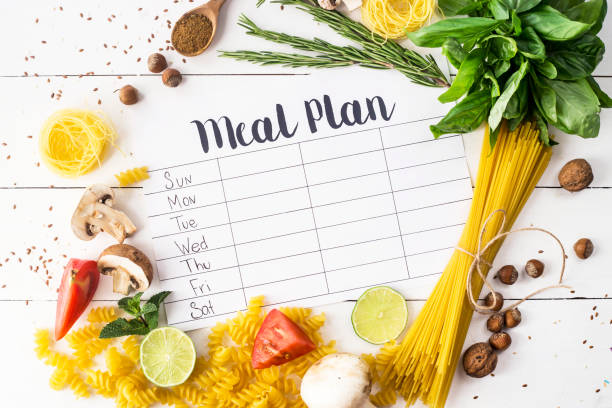
There is more to meal planning than convenience; it has a direct impact on reducing waste; it reduces waste and promotes sustainability. Using ingredients efficiently and knowing exactly what you need minimizes food waste and its environmental impact.
These zero-waste meal planning tips will help you get started:
a. Effectively use leftovers
- Make soups, salads, and wraps with leftovers or transform them into new dishes.
- Make quick and easy meals from leftovers by freezing them in portioned containers.
b. Using local and seasonal produce
- Reduce carbon emissions by choosing seasonal fruits and vegetables and sourcing them locally.
- For fresh, seasonal ingredients, visit farmer’s markets or join a CSA (Community Supported Agriculture).
c. Using reusable ingredients in meals
- Minimize packaging waste by choosing pantry staples and reusable items such as grains, legumes, and bulk spices.
- Reduce the need for single-use packaging by investing in reusable containers for storing prepared ingredients and snacks.
2. Embracing Plant-Based Cooking
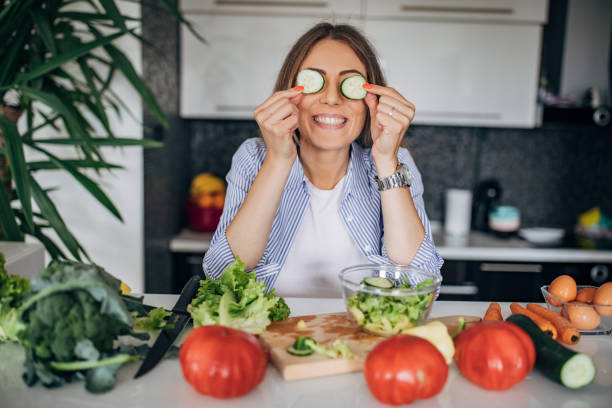
A plant-based diet is more than just a dietary choice; it is a sustainable lifestyle that has numerous health and environmental benefits. The following are some reasons why you should embrace it:
- Reduced carbon footprint: Plant-based diets have a lower environmental impact, requiring fewer resources like water and land compared to animal-based diets.
- Lower greenhouse gas emissions: Livestock farming contributes significantly to greenhouse gas emissions, making plant-based diets a more eco-friendly choice.
- Preservation of biodiversity: By reducing reliance on animal agriculture, we can help preserve ecosystems and protect wildlife habitats.
You can create plant-based recipes to reduce food waste and ensure you have a sustainable kitchen by:
a. Using vegetable scraps for stocks and broths
- Save vegetable peels, stems, and scraps to make flavorful homemade stocks and broths.
- Use a mix of vegetable scraps, herbs, and spices to create a versatile base for soups, stews, and sauces.
b. Repurposing grains and legumes
- Turn leftover cooked grains like rice or quinoa into salads, stir-fries, or stuffed vegetables.
- Transform cooked beans or lentils into hearty burgers, wraps, or dips like hummus.
c. Exploring new flavors with plant-based alternatives
- Experiment with plant-based proteins such as tofu, tempeh, seitan, or legume-based burgers for diverse and satisfying meals.
- Incorporate a variety of herbs, spices, and global cuisines to enhance the flavors of plant-based dishes.
3. Zero-Waste Shopping Strategies
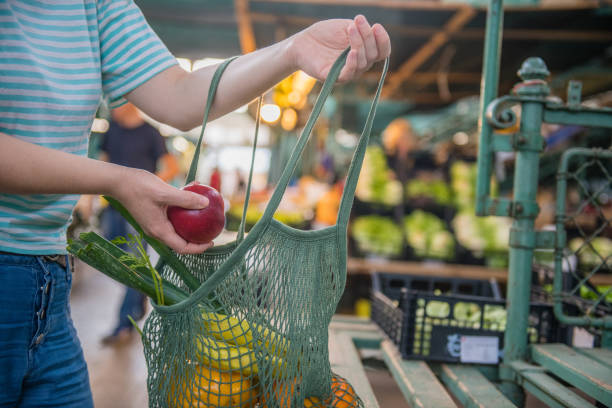
When it comes to reducing waste, your choices at the grocery store can have a significant impact. Here are some eco-friendly shopping strategies to help you minimize waste:
- Bring reusable bags and containers: Replace single-use plastic bags with reusable shopping bags made of cotton or jute.
- Buy in bulk to reduce packaging waste: If you need pantry staples such as rice, pasta, dried fruits, and snacks, look for stores that offer bulk sections.
- Recyclable or minimally packaged products: Plastic packaging is more difficult to recycle than glass, metal, or cardboard. Choosing brands that prioritize sustainable packaging practices will help you avoid overly packaged items.
4. Efficient Food Storage Solutions
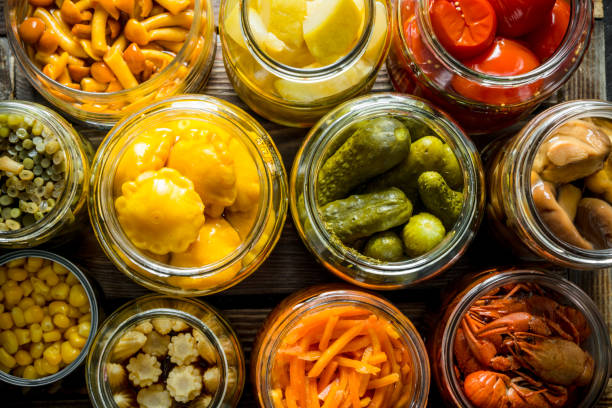
To maintain food freshness and minimize waste, proper food storage is crucial. The following are some sustainable food storage options to consider:
- Instead of plastic, use glass containers: There are no harmful chemicals in glass, making it a great choice for reuse, durability, and safety. They also help maintain food freshness and are safe for use in microwaves, ovens, and dishwashers.
- Preserve freshness with beeswax wraps: Whether covering bowls, wrapping sandwiches or storing cheese and produce, beeswax wraps are a sustainable alternative to plastic wrap. A natural barrier is created by infusing cotton with beeswax, jojoba oil, and tree resin.
- Implement FIFO (First In, First Out) for perishables: FIFO is a storage method where you use older items first to prevent food spoilage and waste. Arrange perishable items in your fridge and pantry based on their expiration dates, rotating them regularly to ensure nothing goes to waste.
Sustainable food storage has several advantages, including:
- Preserve freshness: Proper storage helps extend the shelf life of food, reducing the likelihood of spoilage and waste.
- Prevents cross-contamination: Correct storage practices prevent cross-contamination and maintain food safety standards.
- Maximize nutritional value: Storing food properly preserves its nutritional value, ensuring you get the most out of your ingredients.
5. DIY Cleaning Products

In addition to promoting a healthier home environment without harsh chemicals, switching to DIY zero-waste cleaning solutions is beneficial to the environment. The following recipes use natural ingredients to clean the kitchen:
a. Vinegar-Based All-Purpose Cleaner
Ingredients:
– 1 part white vinegar
– 1 part water
– Optional: a few drops of essential oil for fragrance (e.g., lemon, lavender, tea tree)
Instructions:
- Mix equal parts white vinegar and water in a spray bottle.
- Add a few drops of your preferred essential oil for a pleasant scent.
- Shake well before use.
- Use this all-purpose cleaner on countertops, sinks, and other surfaces for a natural clean.
b. Baking Soda for Scrubbing and Deodorizing
Ingredients:
– Baking soda
– Water (optional for creating a paste)
Instructions:
- Sprinkle baking soda directly on surfaces that need scrubbing, such as sinks, stovetops, and oven interiors.
- For tougher stains or grime, mix baking soda with a small amount of water to form a paste.
- Use a sponge or cloth to scrub the surface gently.
- Rinse thoroughly with water.
- Baking soda also acts as a natural deodorizer, absorbing odors from refrigerators, trash cans, and carpets.
c. Essential Oils for Natural Fragrance and Antibacterial Properties
Ingredients:
– Essential oils of your choice (e.g., tea tree, lemon, eucalyptus)
– Water
– Spray bottle
Instructions:
- Fill a spray bottle with water, leaving some room at the top.
- Add a few drops of your chosen essential oil(s) to the water.
- Shake well to mix the oil with water.
- Use this homemade spray as an antibacterial and naturally fragrant cleaner on surfaces like kitchen counters and appliances.
6. Composting Made Easy

Composting kitchen waste produces nutrient-rich soil for gardening and reduces landfill waste. Here’s why you should consider composting and some simple methods for urban dwellers:
- Waste reduction: Composting diverts organic waste from landfills, reducing methane emissions and minimizing environmental impact.
- Soil enrichment: Compost enriches soil with essential nutrients, improving soil structure, water retention, and plant growth.
- Sustainable gardening: Using homemade compost promotes zero-waste gardening practices, reduces the need for chemical fertilizers, and creates a closed-loop system for organic waste.
Here are some simple zero-waste composting methods for urban dwellers:
a. Small indoor compost bins
- Collect kitchen scraps, such as peels, coffee grounds, and eggshells, in a small compost bin or container with a tight-fitting lid.
- To balance carbon and nitrogen ratios for efficient composting, layer browns (e.g., shredded newspaper, dried leaves) with greens (e.g., food scraps).
- Keeping the compost aerated and turning it regularly will speed up the decomposition process.
- For outdoor gardens and potted plants, harvest finished compost.
b. Using worms to break down organic waste
- Vermicompost food scraps, paper waste, and yard trimmings with red worms (e.g., Eisenia fetida).
- Along with moistened food scraps, add bedding materials such as shredded newspaper or cardboard.
- Vermicompost (worm castings) is produced after the worms consume organic matter.
- Occasionally harvest vermicompost and use it to fertilize indoor or outdoor plants.
c. Implementing a closed-loop composting system in gardening
- Planters, containers, and garden beds can benefit from finished compost as a soil amendment.
- Composted soil improves soil structure, increases nutrient availability, and promotes healthy plant growth.
- Compost kitchen waste, use the compost in your garden, and return organic matter to the compost bin to ensure sustainability.
7. Energy-Efficient Cooking Techniques

Besides lowering utility bills, reducing energy consumption in the kitchen also contributes to a sustainable environment. Here are some smart cooking practices and techniques for energy efficiency:
- Energy-efficient appliances: Invest in ENERGY STAR-certified appliances, such as refrigerators, dishwashers, and stoves, which are designed to consume less energy while performing efficiently.
- Cooking on a stovetop instead of in an oven: Sauteing, boiling, and simmering on the stovetop are often more energy-efficient in homes than baking or roasting in the oven. Reduce cooking time and retain heat by covering pots and pans while cooking.
- Using residual heat to cook and reheat: To finish dishes, turn off an electric stove or an induction cooktop a few minutes before it has finished cooking. By turning off the oven a few minutes before cooking, residual oven heat can be used to reheat food.
8. Repurposing and Upcycling Kitchen Items
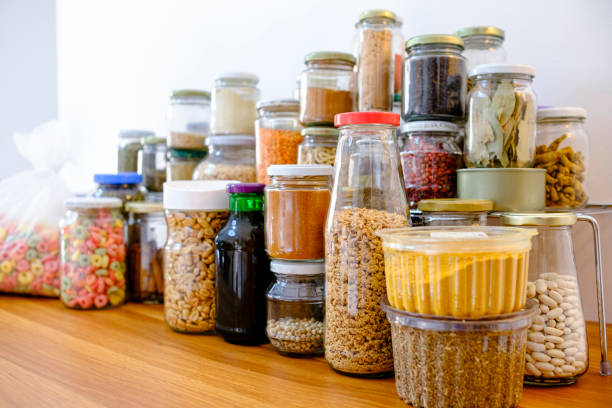
You can add unique touches to your home by recycling old kitchen items and repurposing them, not only to reduce waste but to unleash your creativity as well. Here are some creative ways to repurpose and upcycle kitchen items:
a. Repurposing jars and containers for storage
- Clean and reuse glass jars from food products like sauces, jams, or pickles as storage containers for dry goods, spices, or homemade condiments.
- Use larger jars to store pantry staples like beans, rice, or pasta, keeping them organized and easily accessible.
- Use labels, ribbons, or paint to customize jars to hold snacks, utensils, or small kitchen tools.
b. Repurposing kitchen tools as décor or functional items
- You can make unique wall hooks or decorative accents for your kitchen with old kitchen utensils like wooden spoons, ladles, or graters.
- By sanding and refinishing unused cutting boards into cheese boards or serving trays, you can transform them into useful items.
- Plant herbs or small flowers in metal cans or tins to add greenery to your kitchen.
c. Making DIY beauty and cleaning products from food scraps
- Use citrus peels (e.g., lemon, orange) to make natural cleaners by steeping them in vinegar or mixing them with baking soda.
- Use coconut oil, honey, or sugar to create a homemade face or body scrub.
- Place used tea bags or loose tea leaves in small sachets or bowls around your home to use as natural air fresheners.
9. Sustainable Kitchen Gadgets

Eco-friendly kitchen gadgets are gaining popularity for their positive impact on the environment as sustainability becomes a top priority for many households. Material and features on these gadgets contribute to reducing waste, energy consumption, and environmental impact.
Some of these gadgets include:
a. Reusable silicone food bags
- Replace single-use plastic bags with reusable silicone food bags for storing snacks, leftovers, and ingredients.
- Silicone bags are durable, dishwasher-safe, and come in various sizes to accommodate different food items.
- They help reduce plastic waste and can be used repeatedly, making them a sustainable alternative.
b. Straws and utensils made of stainless steel
- Switch from disposable plastic straws to reusable stainless steel straws, which are durable, easy to clean, and eco-friendly.
- Invest in stainless steel utensils like forks, spoons, and knives instead of disposable plastic cutlery.
- These reusable options reduce plastic waste and contribute to a more sustainable kitchen environment.
c. Induction cooktops that use less energy
- Replace inefficient appliances with energy-efficient ones, such as induction cooktops that directly heat pots and pans.
- As compared to traditional gas or electric stoves, induction cooktops are faster, more precise, and consume less energy.
- They help reduce overall energy consumption in the kitchen and contribute to a greener lifestyle.
10. Minimizing Single-Use Plastics

Reducing single-use plastics in the kitchen is a significant step towards promoting sustainability and reducing environmental impact. Reduce single-use plastics by following these strategies:
a. Use reusable cups and water bottles
- Invest in reusable water bottles made from materials like stainless steel, glass, or BPA-free plastic.
- Carry a reusable travel mug or coffee cup to avoid disposable cups when getting beverages on the go.
- Encourage family members to use reusable bottles and cups to reduce plastic waste.
b. Avoid plastic wrap and choose alternatives
- Replace plastic wrap with reusable beeswax wraps, silicone lids, or cloth covers for food storage and preservation.
- Use reusable containers or jars with lids for storing leftovers, snacks, and meal preps instead of single-use plastic containers.
- Choose eco-friendly alternatives like compostable parchment paper or aluminum foil for wrapping and covering food items.
c. Invest in plastic-free food storage
- Opt for glass or stainless steel food storage containers instead of plastic containers for storing perishable and non-perishable foods.
- Purchase bulk foods and ingredients to minimize packaging waste, and store them in reusable containers or jars.
- Explore plastic-free alternatives like bamboo or stainless steel food storage containers for lunches, picnics, and snacks.
11. Support Local and Sustainable Food Sources
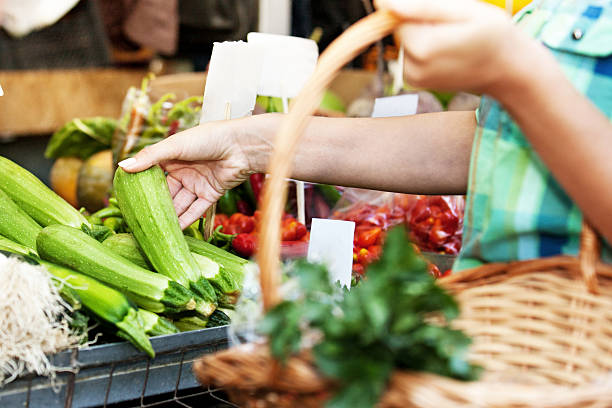
Embracing sustainable food systems and supporting local farmers benefit not just the environment, but also community well-being and healthy eating. Here’s why it’s important and how you can incorporate local and seasonal ingredients into your culinary practices:
- Environmental impact: Buying locally reduces the carbon footprint associated with food transportation, supports sustainable farming practices, and preserves natural resources.
- Community support: Supporting local farmers and businesses strengthens the local economy, fosters community connections, and promotes food security.
- Health benefits: Fresh, seasonal produce from local sources is often more nutritious, flavorful, and free from preservatives or pesticides.
Here are some tips for incorporating local and seasonal ingredients in the kitchen:
a. Visit farmers’ markets and farm stands
- Explore farmers’ markets in your area to discover a variety of fresh, seasonal fruits, vegetables, meats, dairy, and artisanal products directly from local producers.
- Engage with farmers and vendors to learn about their farming practices, sustainability initiatives, and product offerings.
b. Join community-supported agriculture (CSA) programs
- Join a CSA program to receive regular deliveries or pickups of seasonal produce and other farm products directly from local farms.
- CSA memberships support farmers by providing financial stability and allowing consumers to enjoy a diverse range of fresh, locally-grown foods.
c. Research sustainable food certifications and labels
- Look for sustainable food certifications and labels, such as USDA Organic, Certified Humane, Fair Trade, or Rainforest Alliance, when purchasing food products.
- These certifications ensure that food items meet specific environmental, ethical, and quality standards, supporting sustainable food systems globally.
12. Educate and Involve Family Members

Engaging the whole family in sustainable kitchen practices fosters a sense of responsibility towards the environment and promotes healthy habits. Here are ways to involve family members, especially children, in sustainable living:
a. Cook together with a focus on reducing waste
- Involve family members in meal planning and preparation, emphasizing the importance of using ingredients efficiently and minimizing food waste.
- Encourage creativity by turning leftovers into new meals or snacks, teaching children the value of resourcefulness, and reducing food waste.
b. Teach kids about composting and food origins
- Educate children about composting by involving them in the process of collecting organic kitchen waste, maintaining compost bins, and using compost in gardening.
- Discuss the origins of food items, such as where fruits, vegetables, grains, and meats come from, and highlight the environmental impact of food choices.
c. Encourage eco-conscious shopping habits
- Take children along for eco-friendly grocery shopping trips, emphasizing the importance of choosing sustainable, locally sourced, and minimally packaged products.
- Teach kids about reading labels, identifying eco-friendly certifications, and making informed choices that support environmental sustainability.
Some fun activities and learning opportunities for children include:
- Garden-to-table cooking: Grow a small vegetable or herb garden with children and incorporate freshly harvested produce into cooking and meal preparation activities.
- DIY recycling projects: Engage in fun DIY projects using recyclable materials, such as creating art from cardboard, making bird feeders from plastic bottles, or crafting reusable shopping bags from old fabric.
- Nature walks and explorations: Take family nature walks to observe local flora and fauna, learn about ecosystems, and appreciate the natural world.
- Sustainability games and challenges: Organize sustainability-themed games, challenges, or competitions within the family, such as waste reduction challenges, energy-saving contests, or eco-trivia quizzes.
Conclusion
Zero-waste culinary experiences aren’t just a trend; they’re a lifestyle that benefits the planet. Making eco-conscious choices, reducing waste, and implementing sustainable kitchen tips contribute to a healthier environment.
Let’s raise awareness about sustainable kitchen practices, encourage others to adopt eco-friendly habits, and build a community dedicated to environmental preservation through social media, community workshops, and conversations with family and friends.
Together, we can make a difference and create a greener, more sustainable world. Join the sustainability movement today!
Image Sources:







